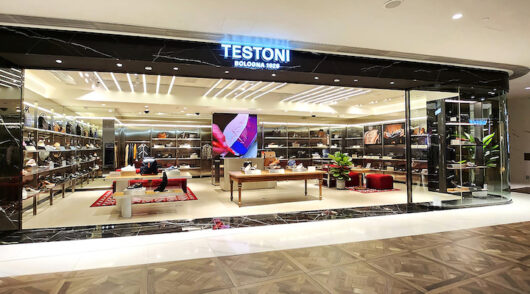There’s a strong and obvious difference in the business models adopted by emerging Asian online retailers and Australian counterparts.
In Australia, most retailers are focused on their own standalone offer, dealing direct with consumers shopping online and building their own database of email customers, each with their own transactional solution.
But in Asia the more common course for smaller retailers is to send feeds to a centralised marketplace rather than operate standalone websites.
Mark Brixton, country manager for Australia and Asia Pacific at SLI Systems, told InsideRetail.Asia that nowhere in Asia is the divergent strategy more evident than in Japan, which now boasts a mature and sophisticated online shopping market.
The bulk of online retailers in Japan feed their inventory lists to a central point, like the highly successful affiliate Rakuten, a concept with little presence in Australia as yet.
Rakuten Japan is chasing Amazon hard to become the world’s largest online retailer – but there is a big difference between the two: Amazon has warehouses all over the US and increasingly all over the world, whereas Rakuten never touches physical product – it acts as a gateway for vendors of any size to connect with shoppers.
Stock inventory and despatch are up to the individual companies which trade under the Rakuten banner and they’re strictly monitored to ensure the Rakuten brand is not damaged by poor shopper experiences.
Amazon, Rakuten, and Yahoo Shopping have each developed large and sophisticated business models in Japan. Yahoo is bigger in Japan than Google.
“Japan is completely opposite to Australia in everything they’re doing in the marketplace. The bulk of the market does not need an e-commerce platform. But in Australia, everyone feels they should have their own e-commerce solution.”
“In Japan people feel like there’s a gold rush over here (Australia).”
SLI Systems makes custom search engines for websites, usually in the e-commerce sector. Brixton, who regularly travels through China, Taiwan, Japan, Singapore and other centres on business, says the difference between market maturities in Asia is very noticeable. Attend an online trade show in China and you’ll meet email providers, app builders, and SEO specialists.
In Japan you’ll meet much more specialist and sophisticated service providers because the whole online retailing industry is much more sophisticated.
Brixton expects the entry into Australia of affiliate giant, Rakuten, will have a big impact over time. Rakuten sold almost US$5 billion dollars worth of goods in 2012. It is now developing an international affiliate marketing-based advertising service for website publishers where sites are paid a percentage of actual sales generated by the advertising clicked on by visitors. Rakuten is all about partnerships.
Various companies have tried to create virtual shopping malls online in Australia, including Westfield, explains Brixton. But no-one has done so with any real experience – experience Rakuten has in spades.
Brixton projects growth will soon be suppressed in Australia, largely due to the limited population. A market of 20 million – albeit affluent by regional and global standards – is small fry compared to Japan or China.
Exposure during the last few months to a number of Asian markets has prompted SLI to focus primarily on mature markets and partnerships.
“We’ll probably approach China as well, but we’ll partner with someone local who has an e-commerce platform and can work with end clients.”
Meanwhile, SLI’s fastest growth is coming not from Asia or Australia but from Brazil.
“The e-commerce market is as sopshitciated there as it is in Australia. Except they have got 70 million people. Five of the top 10 e-commerce retailers in the country each turnover in excess of US$1 billion a year.”
A lot of North American companies look at North America, Europe and “the rest of the world” when defining expansion strategies, adopting the attitude that they’re all the same. Yet Asia accounts for about one third of the world’s population and every market is different.
*This article first appeared in Inside Retail’s Australian based subscriber-only weekly PDF newsletter. For further details visit here.






